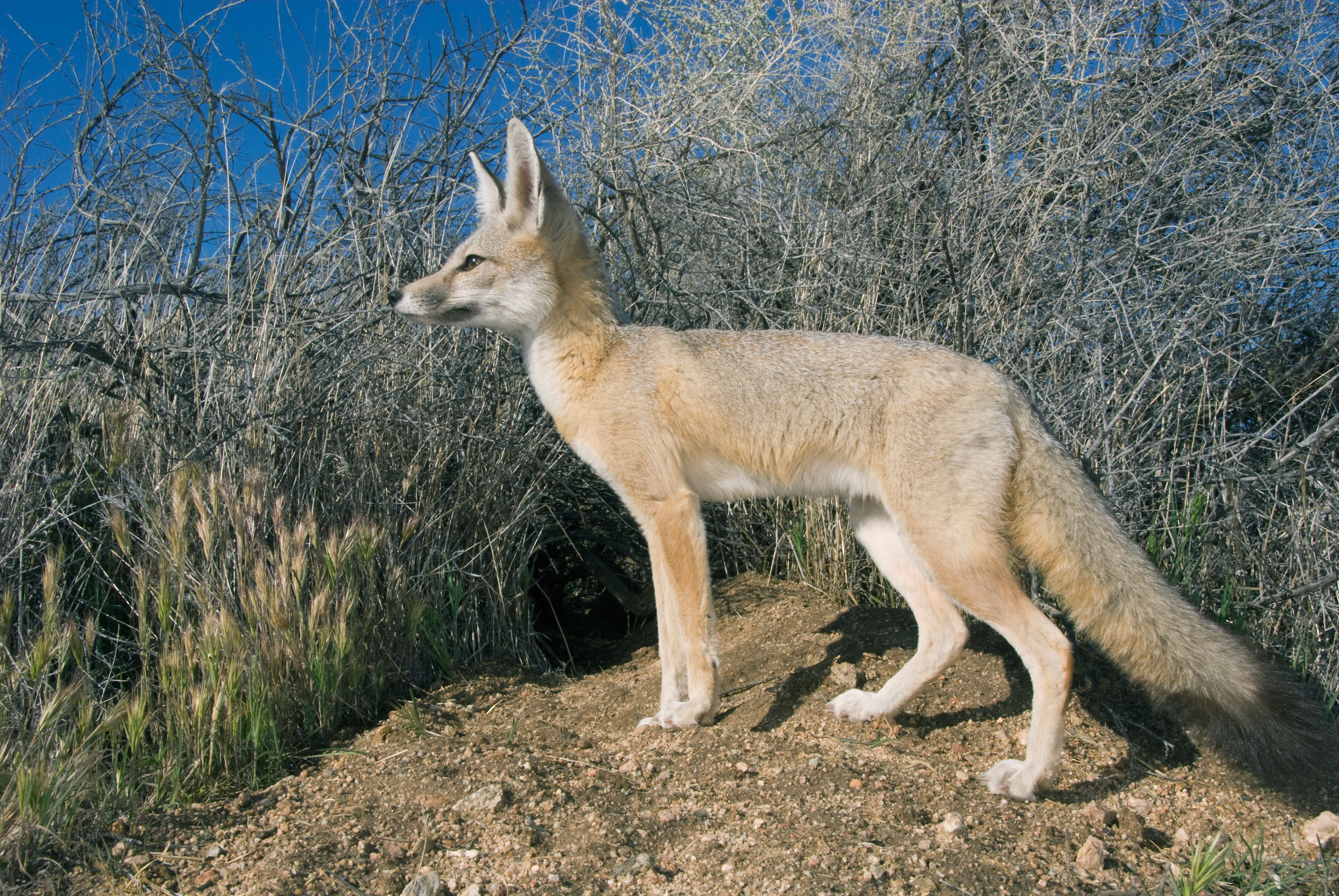Kit fox is a small fox with long ears. The kit fox varies in color from light tan in summer to grizzled light gray in winter. It has brownish-orange fur on its legs, ears, and chest. The kit fox has a bushy, black-tipped tail.

Kit foxes live in the deserts and arid shrub lands and grasslands of western North America. They are well adapted to their dry, hot environments. Stiff tufts of hair on the soles of their feet help give kit foxes traction on loose sand, and hair in their ears helps to keep blowing sand out. Kit foxes are mostly nocturnal (active at night) and spend the day in a den to stay cool. The kit fox is closely related to the swift fox that inhabits parts of the northern Great Plains. 
Kit foxes mainly eat small rodents, particularly kangaroo rats and pocket mice. They also eat insects, rabbits, birds, and lizards. Kit foxes rarely drink. They usually obtain all the water they need from their food.
Each year, the female kit fox gives birth to a litter of one to nine pups. Pups are born 49 to 55 days after mating. Sometimes, a grown pup from the previous year will stay with its parents and help raise the current litter.
Kit foxes are the smallest foxes in North America. They typically measure about 20 inches (50 centimeters) in length. The tail is an additional 12 inches (30 centimeters) long. Males usually weigh about 5.5 pounds (2.5 kilograms). Females weigh slightly less.
Most kit foxes live only three or four years in the wild. Coyotes, bobcats, and golden eagles all prey on kit foxes. Kit fox populations may be threatened in regions where they are not protected by law and their habitat is disturbed by human development. One population in California, known as the San Joaquin kit fox, is listed by the United States government as an endangered species . This population is threatened with extinction and is protected by law.
